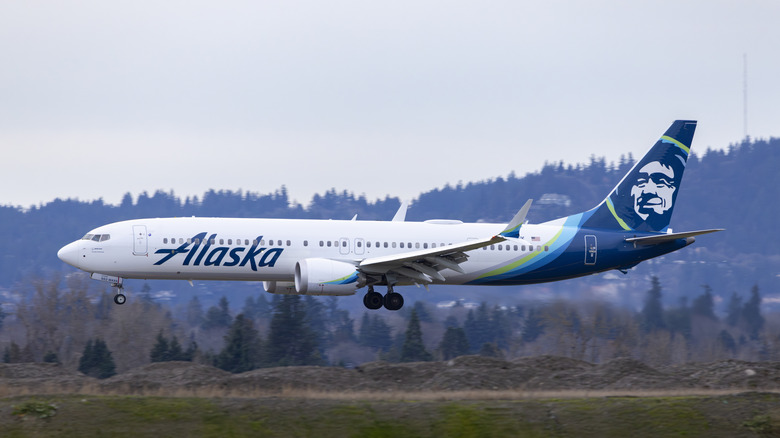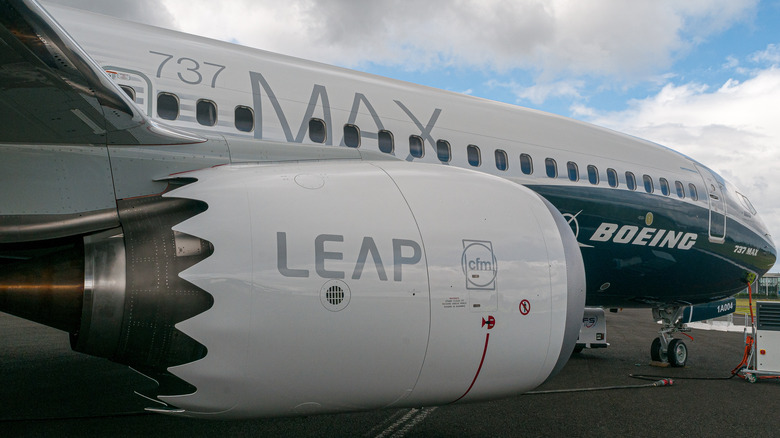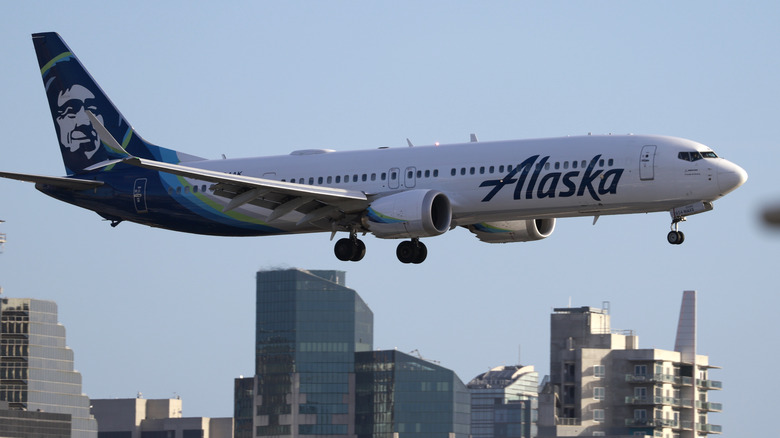Boeing's Disastrous Plane Safety Record Just Had Some Huge Consequences
Nearly two months after the infamous Alaska Air Flight 1282 incident involving a Boeing 737 Max aircraft, the American airplane maker is making several changes to its senior management. As part of these changes, Boeing's President and CEO Dave Calhoun will step down from the role by the end of 2024.
Independent Board Chair Larry Kellner also announced that he would not stand for re-election at the company's annual meeting. Taking Kellner's place is Steve Mollenkopf, who has served as one of Boeing's Board of Directors since 2020. Mollenkpf was also previously the CEO of American chipmaker Qualcomm.
Boeing has not named a CEO-designate yet, and has confirmed that Steve Mollenkopf would lead the board in the process of selecting a new CEO for the company. Changes are also coming to Boeing's Commercial Airplanes division, which was headed by Stan Deal, who has confirmed that he would be stepping down from his role. He is being replaced by Stephanie Pope, who has been named the new CEO of Boeing Commercial Airplanes.
In a public statement addressed to Boeing's employees, Calhoun refers to the Alaska Airlines incident as a "watershed moment" for the company. He urged all employees to respond to the incident with "humility and complete transparency," and that the company must refocus its commitment towards safety and quality at every level.
He also refers to the last five years of Boeing as one of the most challenging periods in the company's 108-year history. A good look at Boeing's less-than-spectacular safety records over the past few years, and Calhoun's statement makes sense.
Boeing's troubles with the 737 Max
The 737 Max was supposed to be the great moneymaker for Boeing, and is a direct competitor to its archrival — the Airbus A320 Neo. A direct successor to the Boeing 737 NG family, these planes came with a promise of more efficient engines, featuring several aerodynamic changes and airframe modifications. However, barely a year after the first commercial service of the 737 Max began in May 2017, the aircraft suffered its first major crash.
In October 2018, a brand-new Boeing 737 Max, operated by Lion Air, crashed into the Java Sea shortly after takeoff, killing all 189 people on board. Five months later in March 2019, another 737 Max — this time flying as Ethiopian Airlines Flight 302 — suffered a similar fate and crashed just six minutes after takeoff, resulting in the deaths of 157 people. This second 737 Max crash resulted in the worldwide grounding of all 737 Max aircraft, and also led to a worldwide investigation into how the plane was approved for passenger service.
Investigations would later reveal that both crashes were caused by a new flight stabilizing feature called Maneuvering Characteristics Augmentation System (MCAS). In April 2019, Boeing's then-CEO Dennis Muilenburg acknowledged that MCAS was the reason for both the infamous 737 Max crashes that took the lives of 346 people in all.
Boeing's manufacturing and safety protocols have been under the cloud ever since these two incidents, and the worldwide grounding of the 737 Max lasted well over 20 months in the U.S. — longer in other countries.
What happened to Alaska Air Flight 1282?
The 737 Max's safety concerns came to the limelight again following the Alaska Air incident in January 5, 2024, where a door plug came off the plane shortly after takeoff. The aircraft cabin suffered an uncontrolled decompression as a result of this, and fortunately, there was no loss of life as the plane landed safely thereafter.
For those unaware, a door plug is a structure that replaces an optional emergency exit door on the Boeing 737 Max 9. This incident led to another series of grounding — this time limited to all 737 Max 9 aircraft — which featured the same door plug design. On January 8, investigations conducted by United Airlines and Alaska Airlines revealed several loose bolts that were intended to secure the door plug in place.
This grounding resulted in roughly 110 and 150 flight cancellations for Alaska Airlines, which lasted from January 12 to January 21, 2024. The NTSB also submitted a preliminary investigation report which indicated that the affected Alaska Airlines 737 Max 9 may have lacked these critical door bolts.
A few weeks later, the FAA recommended that similar investigations be carried out on the older Boeing 737-900ER aircraft that featured an identical door plug design. Before the end of January, all affected 737 Max 9 aircraft were back in the air after the FAA approved a new inspection process for the aircraft.


